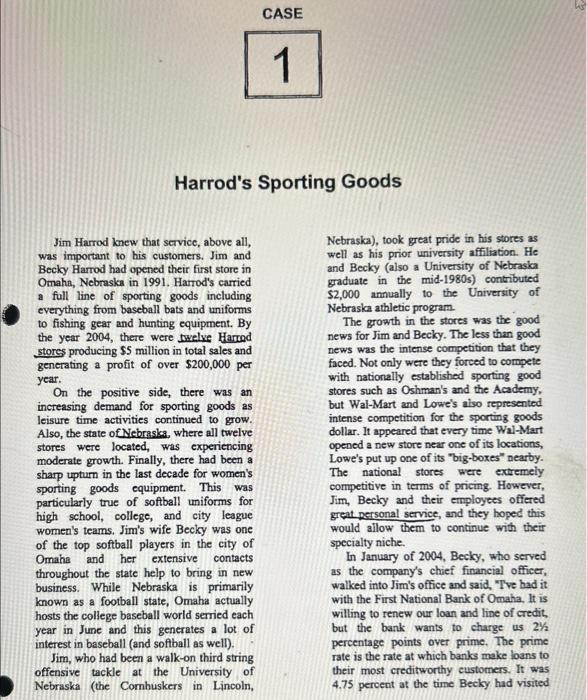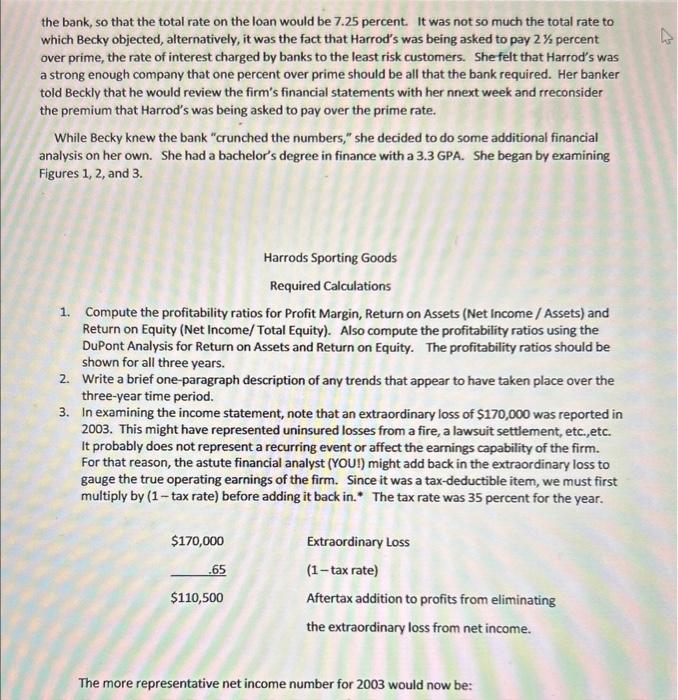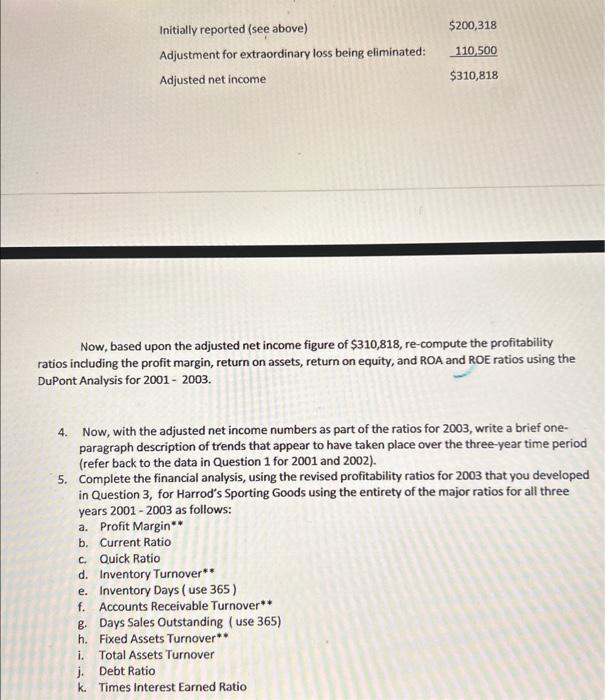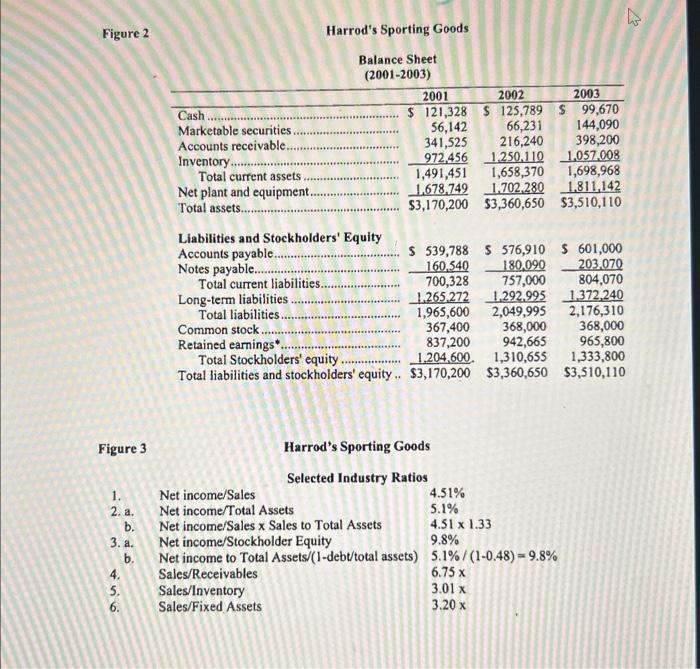Answered step by step
Verified Expert Solution
Question
1 Approved Answer
Please show work on how you got the answers so I can see what I am doing wrong Harrod's Sporting Goods Jim Harrod knew that
Please show work on how you got the answers so I can see what I am doing wrong 





Harrod's Sporting Goods Jim Harrod knew that service, above all, was important to his customers. Jim and Becky Harrod had opened their first store in Omaha, Nebraska in 1991. Harrod's carried a full line of sporting goods including everything from baseball bats and uniforms to fishing gear and hunting equipment. By the year 2004, there were twelve Harrod stores producing SS million in total sales and generating a profit of over $200,000 per year. On the positive side, there was an increasing demand for sporting goods as leisure time activities continued to grow. Also, the state of Nebraska, where all twelve stores were located, was experiencing moderate growth. Finally, there had been a sharp upturn in the last decade for women's sporting goods equipment. This was particularly true of softball uniforms for high school, college, and city league women's teams. Jim's wife Becky was one of the top softball players in the city of Omahe and her extensive contacts throughout the state help to bring in new business. While Nebraska is primarily known as a football state, Omaha actually hosts the college baseball world serried each year in June and this generates a lot of interest in baseball (and softball as well). Jim, who had been a walk-on third string offensive tackle at the University of Nebraska (the Comhuskers in Lincoln. Nebraska), took great pride in his stores as well as his prior university affiliation. He and Becky (also a University of Nebraska graduate in the mid-1980s) contributed $2,000 annually to the University of Nebraska athletic program. The growth in the stores was the good news for Jim and Becky. The less than good news was the intense competition that they faced. Not only were they forced to compete with nationally established sporting good stores such as Oshman's and the Academy, but Wal-Mart and Lowe's also represented intense competition for the sporting goods dollar. It appeared that every time Wal-Mart opened a new store near one of its locations, Lowe's put up one of its "big-boxes" nearby. The national stores were extremely competitive in terms of pricing. However, Jim, Becky and their employees offered great. personal service, and they hoped this would allow them to continue with their specialty niche. In January of 2004, Becky, who served as the company's chief financial officer, walked into Jim's office and said. "Tve had it with the First National Bank of Omaha, It is willing to renew our loan and line of credit, but the bank wants to charge us 2Y2 percentage points over prime. The prime rate is the rate at which banks make loans to their most creditworthy eustomers. It was 4.75 percent at the time Becky had visited Barred's Sporcing Gosds Income Statement (2001-2003) the bank, so that the total rate on the loan would be 7.25 percent. It was not so much the total rate to which Becky objected, alternatively, it was the fact that Harrod's was being asked to pay 2% percent over prime, the rate of interest charged by banks to the least risk customers. She felt that Harrod's was a strong enough company that one percent over prime should be all that the bank required. Her banker told Beckly that he would review the firm's financial statements with her nnext week and rreconsider the premium that Harrod's was being asked to pay over the prime rate. While Becky knew the bank "crunched the numbers," she decided to do some additional financial analysis on her own. She had a bachelor's degree in finance with a 3.3 GPA. She began by examining Figures 1, 2, and 3. Harrods Sporting Goods Required Calculations 1. Compute the profitability ratios for Profit Margin, Return on Assets (Net Income / Assets) and Return on Equity (Net Income/ Total Equity). Also compute the profitability ratios using the DuPont Analysis for Return on Assets and Return on Equity. The profitability ratios should be shown for all three years. 2. Write a brief one-paragraph description of any trends that appear to have taken place over the three-year time period. 3. In examining the income statement, note that an extraordinary loss of $170,000 was reported in 2003. This might have represented uninsured losses from a fire, a lawsuit settlement, etc.,etc. It probably does not represent a recurring event or affect the earnings capability of the firm. For that reason, the astute financial analyst (YOU!) might add back in the extraordinary loss to gauge the true operating earnings of the firm. Since it was a tax-deductible item, we must first multiply by ( 1 -tax rate) before adding it back in.* The tax rate was 35 percent for the year. The more representative net income number for 2003 would now be: Harrod's Sporting Goods Balance Sheet (2001-2003) Harrod's Sporting Goods Note: All ratios indicated by have industry comparisons. 6. Harrod's has a superior sales to total assets ratio compared to the industry. You already have above computed the Accounts Receivable Turnover, Inventory Turnover, and Fixed Assets Turnover ratios. Write a brief one-paragraph description of the results that you observe. 7. Conclusion: Based on your overall analysis including your work with the adjustment to the Net Income for 2003, do you think that Becky Harrod has a legitimate complaint about being charged 221 percent over prime instead of only one percent over the prime rate? (What is prime rate?) No absolutely correct answer exists to this question. Use your conclusions about the analysis and your best judgement. Now, based upon the adjusted net income figure of $310,818, re-compute the profitability ratios including the profit margin, return on assets, return on equity, and ROA and ROE ratios using the DuPont Analysis for 2001 - 2003. 4. Now, with the adjusted net income numbers as part of the ratios for 2003 , write a brief oneparagraph description of trends that appear to have taken place over the three-year time period (refer back to the data in Question 1 for 2001 and 2002). 5. Complete the financial analysis, using the revised profitability ratios for 2003 that you developed in Question 3, for Harrod's Sporting Goods using the entirety of the major ratios for all three years 20012003 as follows: a. Profit Margin** b. Current Ratio c. Quick Ratio d. Inventory Turnover** e. Inventory Days (use 365) f. Accounts Receivable Turnover** g. Days Sales Outstanding (use 365 ) h. Fixed Assets Turnover** i. Total Assets Turnover j. Debt Ratio k. Times Interest Earned Ratio 





Step by Step Solution
There are 3 Steps involved in it
Step: 1

Get Instant Access to Expert-Tailored Solutions
See step-by-step solutions with expert insights and AI powered tools for academic success
Step: 2

Step: 3

Ace Your Homework with AI
Get the answers you need in no time with our AI-driven, step-by-step assistance
Get Started


